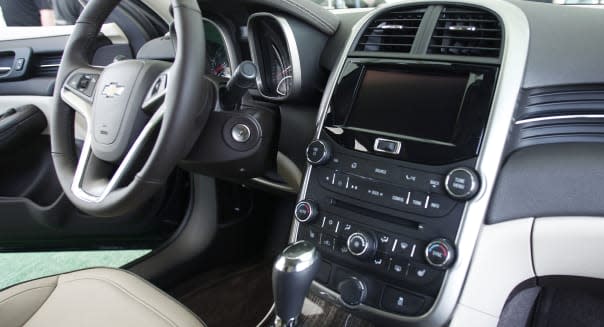GM, AT&T Are Pairing Up to Hit the Road With Connected Cars

We're years away from mass production of cars that drive themselves, and you're dreaming if you think that flying cars like we saw on "The Jetsons" will happen in our lifetimes. However, the one automotive revolution that's about to make a big splash is the connected car.
Web-tethered cars can track local traffic in real time and serve up Web access, streaming apps and other infotainment for backseat passengers.
Many cars already allow smartphone users to use their mobile Bluetooth connections to play Pandora (P) through their dashboard entertainment systems or engage in hands-free phone calls. However, factory-equipped WiFi hotspots that seamlessly connect gadgetry brought into the car makes the revolution so much easier. It's already happening on a small scale. General Motors (GM) and AT&T (T) are about to take it mainstream.
Welcome to the Information SuperhighwayHighway
It's been 15 months since GM and AT&T announced that they would be adding 4G LTE connectivity to 30 models of Chevrolet Buick, GMC, and Cadillac vehicles, building on GM's OnStar telematics platform.
These cars are starting to roll off the assembly line, and by next month the mobile WiFi option will be available when the 2105 Chevy Malibu hits the showroom.
AT&T's multi-year agreement to provide 4G LTE mobile Internet will be $10 for customers in the Mobile Share data plan, where an account accesses a pool of data every month across various devices. Others will pay $30 to $50 a month for access.
There's an App Store for That
Outside of its OnStar services, GM hasn't typically been on the cutting edge of technology. However, in the knowledge that many of its cars will soon have speedy 4G LTE connectivity, the automaker is making up for lost time by incorporating proprietary applications that can be opened right from the dashboard.
%VIRTUAL-article-sponsoredlinks%Tech blog Gigaom surveyed the suite of initial apps back in February. There wasn't much. Just a dozen applications were available at the time, including Weather.com, streaming music leader Pandora, and mobile concierge CitySeeker.
Give it time. As the cars start becoming available, you can be sure that developers of applications that provide everything from restaurant reservations to localized flash sales will start jumping through GM's hoops to make their programs available for its in-car platform.
Naturally you don't need to feed on just what GM is serving. With the entire car having 4G LTE access, someone can be firing up Netflix (NFLX) on a tablet in the backseat while someone else plays King Digital's (KING) Candy Crush Saga on a portable media player.
Table for One
At its most rudimentary level, the connected car will be about entertainment. Terrestrial radio has been losing share to satellite radio, and now drivers will have even easier access to the growing universe of streaming audio content. That's going to be a big part of the connected car, especially for lone drivers that can't take advantage of more distracting Web-served video and game applications.
However, think about ways that having a constant online connection will make a drive more productive. Google's (GOOG) Waze and other traffic and navigation apps will alert drivers of congestion ahead of them, and offer up the best alternate routes in ways that traditional GPS devices can't match. Daily deals sites have been beefing up their offerings of location-based bargains, a trend that dovetails nicely with connected vehicles. Apps that alert you when friends are nearby, read out Twitter (TWTR) feeds, or allow you to dictate shopping lists will be useful too.
The connected car is coming, and the revolution is about to hit the accelerator.
Motley Fool contributor Rick Munarriz has no position in any stocks mentioned. The Motley Fool recommends General Motors. Try any of our newsletter services free for 30 days.

